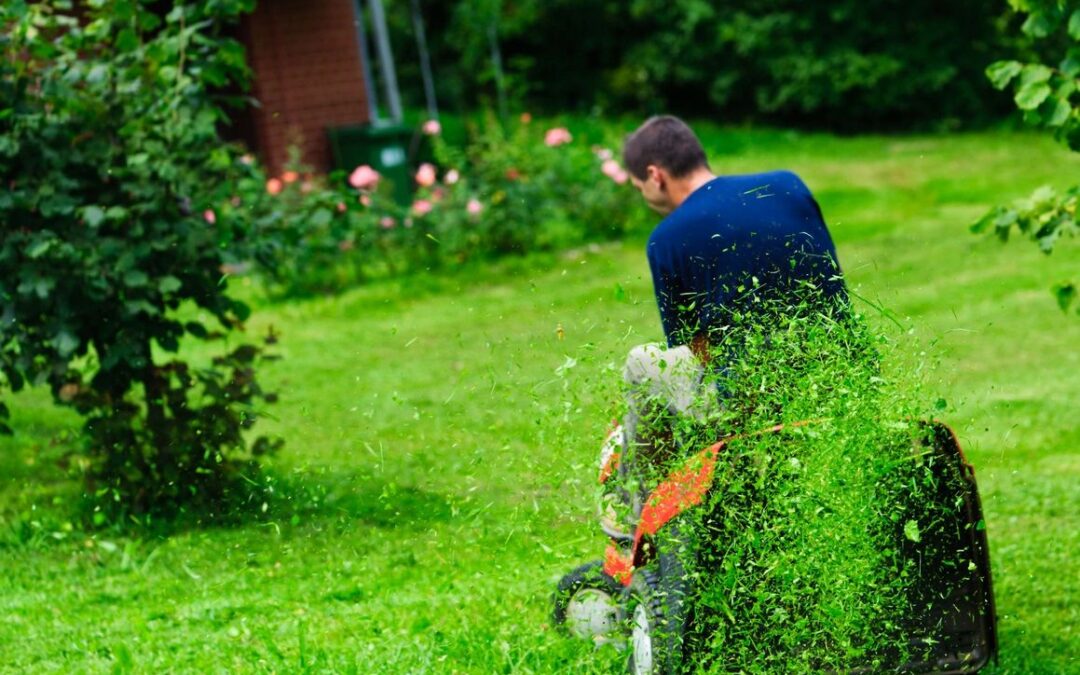- 18% of municipal solid waste is composed of yard waste
- The average suburban lawn received 10 times as much chemical pesticide per acre as farmland
- Gas lawn mowers emit 10-12 times as much hydrocarbon as a typical auto
- Weed eaters emit 21 times more
- Leaf blowers emit 34 times more
To avoid adding to these statistics, here are 7 tips for a healthier yard:
1. Use Organic Material to Improve the Soil
Lawns grow best in loamy soils that have a mix of clay, silt, and sand. Compost, grass clippings, and other organic materials help keep your soil mixture balanced. If your soil is clay-heavy, it runs the risk of getting compacted, preventing it from getting vital airflow and nutrients. Organic matter can lighten the soil if there’s too much clay, solving this problem before it becomes an issue.
If your soil is too sandy, it will have problems retaining water and nutrients. Organic matter can build humus in sandy soils, which helps them absorb water, nutrients, and anything else the soil may require.
2. Natural Lawn Care: Aeration
If you’re lacking in organic material and your soil is compacted, aerating it will help. Aerating involves perforating the soil with small holes – usually done with a spade or a lawn aerator. These holes help nutrients, airflow, and water reach the roots so that they can continue to grow. You should also consider aerating your lawn if you have excess thatch or debris, such as piles of leaves, that cover your lawn’s surface.
3. Test Your Soil’s pH
You should test your soil’s pH semi-regularly, especially in early spring. For best results, your soil should have a pH between 6 and 7. This range promotes the readiest availability of plant nutrients. If your soil has a lower pH, it is too acidic and at risk of being contaminated with diseases. Sprinkling lime will raise your pH, helping your soil remain healthy.
4. Water Deeply, But Infrequently
Give your lawn one inch of water a week – and this includes rain. If you’re wondering how much water an inch is, set up an empty can of tuna within range of your sprinkler. Once the can is full, your lawn has had enough for the week.
For even better results (especially for larger lawns), consider using a drip irrigation system. These use 20%-50% less water and go straight to the roots, enabling healthy growth.
5. Lawn Care: Mow High, Mow Often
By mowing your lawn short, you’re exposing your surface roots and risk your soil drying out faster. If you continuously mow short, you may end up with a balding, patchy lawn. For proper lawn care, don’t cut off more than one-third of the grass during any single mow. Most Washington State turf grasses are at their healthiest when they’re between 2.5-3.5 inches.
6. Weeding
We recommend weeding 2-3 times a month, or as necessary, all year round. By scheduling regular weeding, you’ll prevent the sprouting of hundreds – even thousands – of weeds over time. Taking this approach to lawn care will save you time, money, and stress, all the while consistently maintaining a healthy lawn.
7. Remove Excess Thatch
Half an inch of thatch is manageable for a healthy lawn. If there’s more than that, natural decomposition, microorganisms, and earthworms can’t keep up and nutrients and water will be unable to penetrate the roots of the grass. We also recommend that you first try aerating your lawn to see if the microorganisms can do the rest. If this doesn’t work, remove the thatch until it reaches the half an inch threshold.
Final Note
There are plenty of smart natural lawn care strategies that can help you maintain a healthy lawn. These are just a few to get you started. For more information, check out our approach to total yard care.

